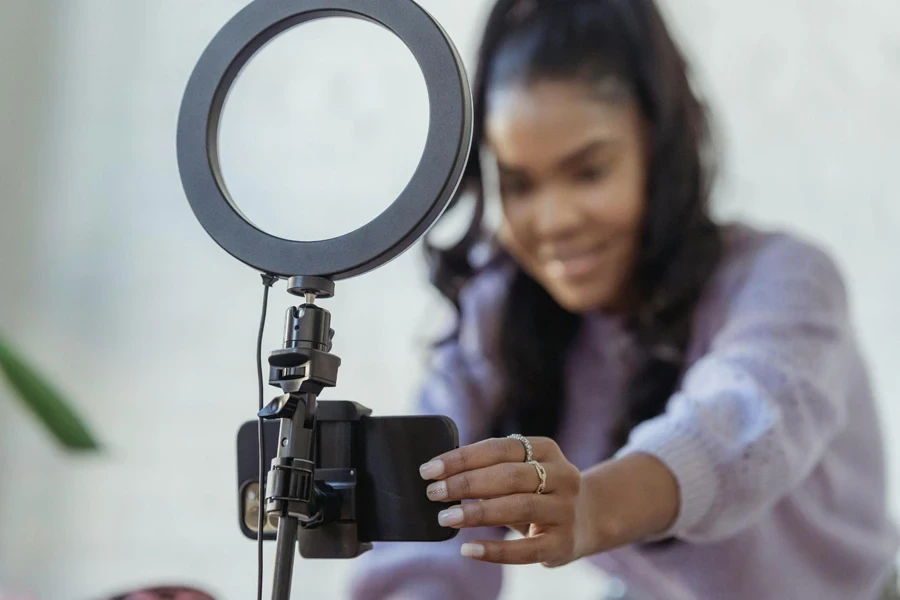With the increased market of digital media, businesses have to come up with much more creative ways to capture the attention of their audience. And in this new media landscape, video content has been proven to be especially effective: A market report by G2 showed that businesses could witness a 66% increase in qualified leads when they opt for video marketing.
Specifically, video sales letters (VSL) offer a dynamic marketing tool that is particularly persuasive thanks to their ability to demonstrate a product or service to a targeted audience effectively.
These digital sales toolspersons are packed with benefits, from helping to attract attention and making better conversions and leads, to eventually scoring extra sales and profit.
However, to best understand how to harness VSL for your own business needs, there are some key aspects first to understand. In this article, we’ll take a look how to write a powerful sales script so that you can boost sales in 2025.
Table of Contents
1. What is a VSL and how do they work?
2. How to write a successful VSL script
3. The steps for creating a VSL
4. Conclusion
What is VSL and how do they work?

A VSL, or video sales letter, is a sales proposition that is delivered via video and whose primary purpose is to convert and generate sales.
These videos tend to be on the shorter side – between 3-5 minutes – and promote free or low-priced offers. However, as the price of the product or service advertised goes up, so too does the length of the video, so as to provide more information to the recipient.
This format is best suited to freelancers, entrepreneurs, and small agencies who have specific products or services that fall between medium-to-high prices. It’s important that these videos are precise and generally only encompass one service or product.
Before creating VSL, it is crucial to understand what you are trying to achieve. This can include:
- Supplementing your sales page, as they tend to demonstrate a specific product’s function, how to use it, or its general purpose
- As an additional touchpoint once the customer has taken action, such as making
Always keep in mind whether the sellers will know if the content covered by the VSL is right for them. How to do this? You may want to start with some consumer testing and questionnaires, making sure to pinpoint the purpose of your VSL before creating a script and video.
How to write a successful VSL script

High-converting VSLs require strong scripting as they are sales copy reworked into video form.
When writing a script that you hope to create more conversion and sales, make sure to weigh up the following:
Consider using your sales page copy
You don’t need to write something completely fresh or from scratch when working on a VSL script. Instead, consider using preexisting sales copy. This can help you focus on the key elements much easier, as well as add necessary authenticity by capturing your brand’s overall voice. However, make sure it has all the basic essential elements.
Have a list of essential components
Regardless of whether you choose to write a script from scratch or repurpose sales copy, you must ensure that it contains the following components:
A great hook
An eye-catching hook grabs users’ attention and ensures they want to learn more. The easiest way to craft a great hook is by looking for a common thread between your brand and the customer. This can be done by telling a story, pitching a fact, or asking a question. To make the video more interesting, you can add a lively voiceover, impactful images, or different filters.
Spell out potential pain points
Specify the issue that a specific target audience might be facing, and make your intent to help them solve it clear when you advertise the video. Highlighting a specific problem or bottleneck can help attract more customer engagement.
Offer a solution
Once the potential customer is hooked via a question or pain point, it’s time to present the solution. Keep the presentation simple, and make sure it solves the problem that they initially clicked on the video for in the first place.
Be authoritative
Establishing authority helps ensure you, the seller, and the customer are on the same page, making sure to offer a solution that comes from a genuine place. Instead of bragging or boasting, talk about experiences, or how sellers or customers who used your product or service faced similar challenges and were able to overcome them.
Explain how the product/service works
Discuss technical information once you’ve established a connection with the viewer. This encourages them to make a more informed purchasing decision using the information you’ve provided.
Present a final offer
At the end of the video, it’s time to add a clear and exact call to action (CTA) to urge the target viewer to take the next step. By stating the problem, the solution, and then leading them to the product, you stand more chance of boosting conversion rates than if you left them to their own devices.

Include a future prospect
Invite target viewers to think what it might be like to use your product or service, using phrases like “imagine what it would be like” or “how good it would feel if,” covering how you can make their life better via a specific solution.
Add a before and& after transformation
Add an example of the transformation that can occur between someone before they use the product or service and after the customer uses it. This acts as “proof” of the product’s effectiveness, helping to build trust. Adding stories, demonstrations, and testimonials can also be helpful in this regard.
The steps for creating a VSL

Once the video sales letter’s script is checked off, it’s time to make the video. Below, are some brief steps on how to create an effective VSL:
Pick a style, record, and edit
After writing the script, choose the type of style of video you want to use for your VSL. It could be everything from text over slides, a speech-to-camera recording, just audio, or even have added animation.
Memorize the script and record using a smartphone, webcam, or professional camera. After the video is done, edit as per requirement.
Create a home for hosting the VSL
The next step includes hosting the video. Depending on the seller’s purpose and end goals, you may want to pick one or more platform such as YouTube, Tiktok, Instagram, etc.
Also, create a landing page for viewers to continue with their next step and add a CTA so that they know what they should do next.
Promote it using different channels
Depending on the type of product or service you’re offering, it is important to pick how and where to promote your VSL, for example:
- If the product is targeting the masses, upload it on YouTube-like platforms to promote it through ads
- For more niche products, refer to webpages and embed them via emails, Google Ads, podcasts, the seller’s website, etc.
The purpose of promotion is to increase the likelihood of your VSL being seen by the target market, so choose the platforms that best serve this purpose while also making it available to other desired audiences.
Conclusion
VSLs are a great way to hit the sweet point between scalability and conversion. With a strong sales script and a basic understanding of the medium, they can help businesses stand out, especially because video is a more effective medium for selling compared with text.
By following the guide above, you can gain a basic understanding of how to create a VSL.
While such content may seem intimidating at first, with a little bit of work and practice, anyone can master this technique, creating leads for improved conversions, sales, and profits.



